Trauma can leave lasting imprints on our bodies, including in the pelvis and hips. The root and sacral chakras, located in this area, are often where we hold emotional and physical tension. “The Body Keeps the Score” highlights how our bodies store traumas, and how it’s important to release them not only mentally and emotionally, but physically too. Yoga can be a powerful tool for releasing trauma in the pelvis and promoting overall healing.
Disease comes from dis-ease, which is why it’s important to learn to release tension and trauma from the body.
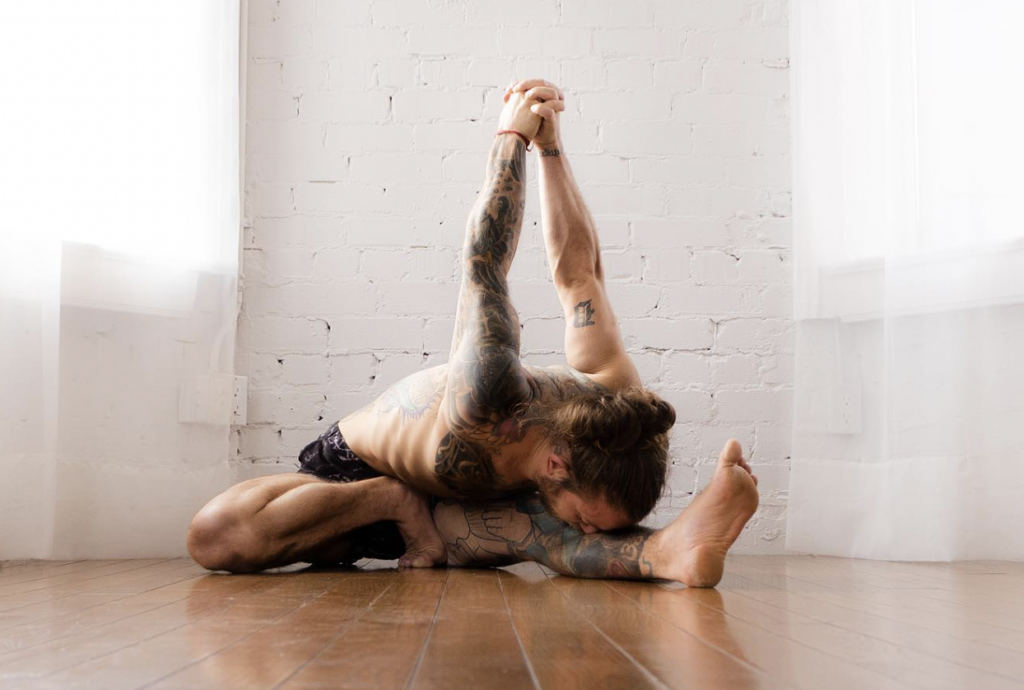
How trauma affects the pelvis and hips
Trauma can manifest in different ways in the body, but when it is stored in the pelvis and hips, it can lead to physical symptoms such as chronic pain, tension, and stiffness in the hips, lower back, and thighs. It can also affect our emotional and mental well-being, leading to anxiety, depression, and other mood disorders.
The root and sacral chakras, located in the pelvis, are often associated with our sense of safety, grounding, creativity, and sexuality. When these chakras are blocked or imbalanced due to trauma, it can affect our ability to feel secure and connected in the world, as well as our ability to express ourselves creatively and intimately.
The benefits of yoga for releasing trauma in the pelvis
Yoga can be a powerful tool for releasing tension and trauma in the pelvis and hips. Through the practice of yoga, we can learn to become more aware of our bodies, our breath, and our emotions, which can help us to release stored tension and emotions.
Yoga can also help to stimulate and balance the root and sacral chakras, which can lead to greater feelings of safety, creativity, and connectedness. The physical movements and breathing techniques used in yoga can help to increase circulation and release tension in the pelvis and hips, leading to greater physical and emotional well-being.
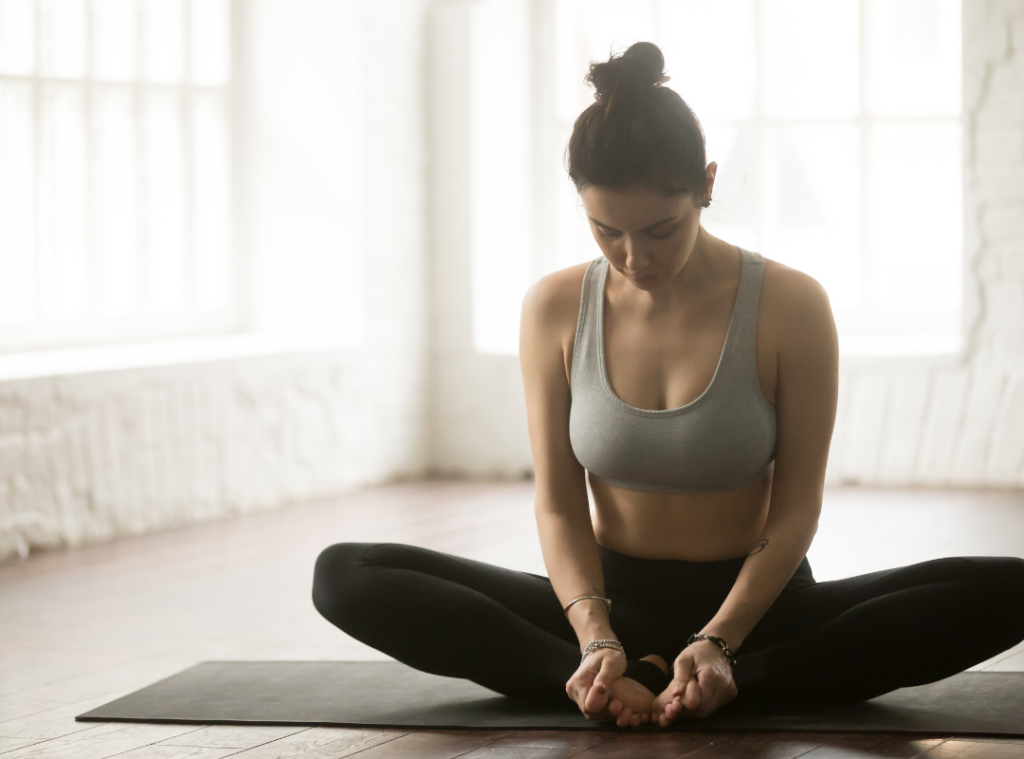
Yoga poses for releasing trauma in the pelvis
Here are some yoga poses that can help to release tension and stored trauma in the pelvis and hips:
- Pigeon Pose (Eka Pada Rajakapotasana): This pose stretches the hip flexors, glutes, and outer hips.
- Butterfly Pose (Baddha Konasana): This pose stretches the inner thighs, groin, and hips.
- Cow Face Pose (Gomukhasana): This pose stretches the outer hips, thighs, and glutes.
- Garland Pose (Malasana): This pose stretches the hips, groin, and ankles.
- Bound Angle Pose (Baddha Konasana): This pose stretches the inner thighs, groins, and knees, helping to open up the pelvis.
- Wide-Legged Forward Fold (Prasarita Padottanasana): This pose stretches the inner thighs, hips, and hamstrings, and can help to open up the pelvis.
- Goddess Pose (Utkata Konasana): This pose strengthens the legs and opens the hips and pelvis.
- Happy Baby Pose (Ananda Balasana): This pose stretches the inner thighs and hips and can help release pelvis tension.
- Bridge Pose (Setu Bandhasana): This pose strengthens the pelvic floor muscles, as well as the glutes, thighs, and core.
- Mula Bandha: Technically, this is not a pose, but a technique for engaging the pelvic floor muscles. To do it, sit in a comfortable position, close your eyes, and imagine that you are drawing the pelvic floor muscles up and in towards your spine.
Here are some general tips for performing each of the above yoga poses for releasing trauma in the hips and pelvis safely and effectively:
Pigeon Pose (Eka Pada Rajakapotasana)
Start on your hands and knees, then slide your right knee forward and place it behind your right wrist. Your right foot should be in front of your left hip. Extend your left leg behind you, keeping your hips square. Walk your hands forward and lower your torso onto your right thigh. Keep your back leg long and active, and try to relax your hips and breathe deeply. Repeat on the other side.
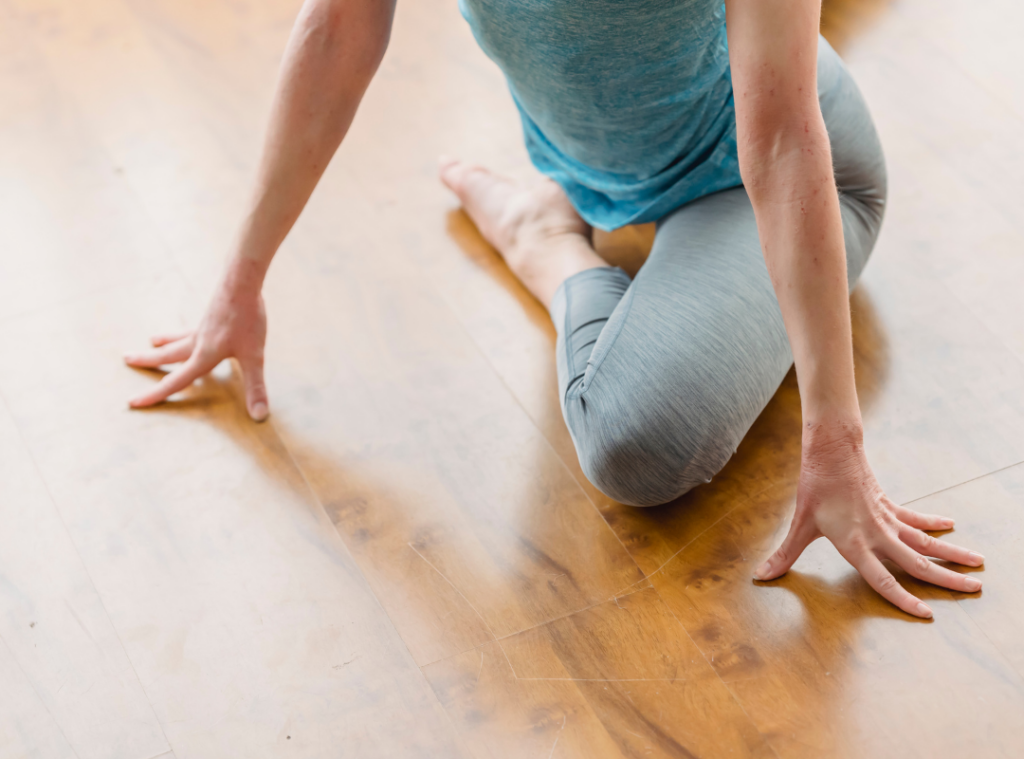
Butterfly Pose (Baddha Konasana)
Sit on the floor with the soles of your feet together and your knees bent out to the sides. Hold onto your feet or ankles, and gently press your knees down towards the floor. Sit up tall and breathe deeply. You can also lean forward to deepen the stretch.
Cow Face Pose (Gomukhasana)
Start seated with your legs extended in front of you. Bend your right knee and cross your right foot over your left knee. Bring your left foot to the outside of your right hip. Stack your right knee on top of your left knee, and sit up tall. Hold onto your feet or use a strap to reach your hands behind your back. Breathe deeply and repeat on the other side.
Garland Pose (Malasana)
Start in a squat with your feet a little wider than hip-distance apart. Turn your toes out slightly and bring your palms together at your heart. Use your elbows to gently press your knees open, and lengthen through your spine. Breathe deeply.
Bound Angle Pose (Baddha Konasana)
Start seated with the soles of your feet together and your knees bent out to the sides. Hold onto your feet or ankles, and bring your heels towards your body. Sit up tall and breathe deeply.
Wide-Legged Forward Fold (Prasarita Padottanasana)
Start with your feet about three to four feet apart, toes pointing forward. Bring your hands to your hips and lengthen through your spine. Exhale and fold forward, bringing your hands to the floor or onto blocks. Keep your spine long and breathe deeply.
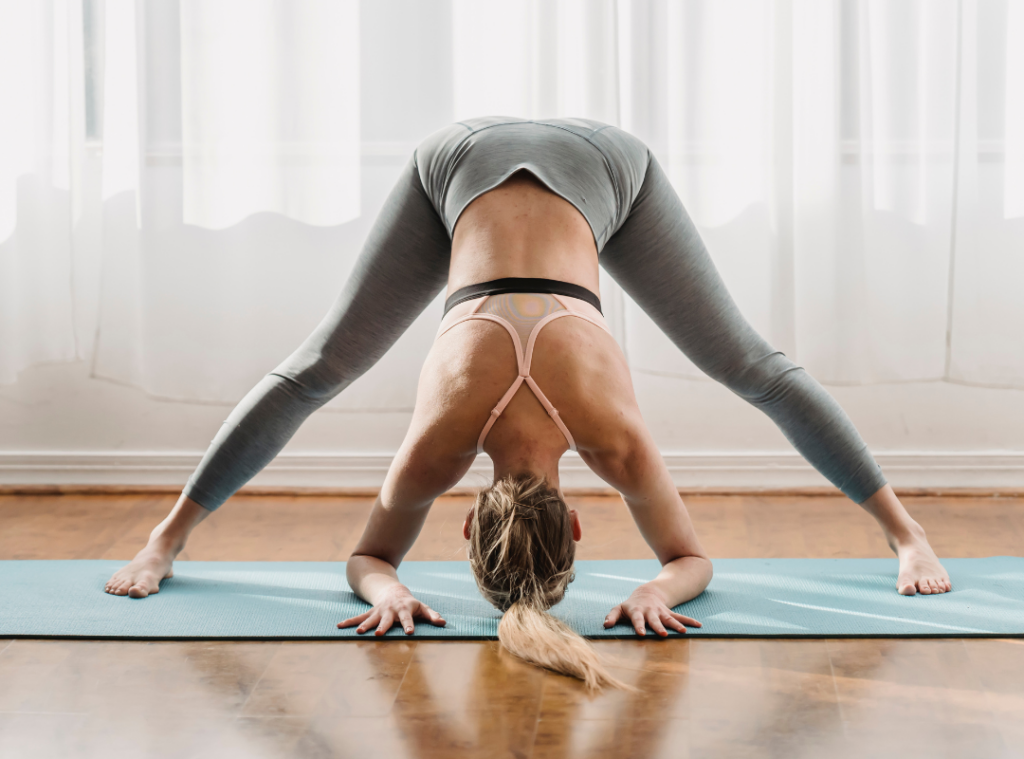
Goddess Pose (Utkata Konasana)
Start with your feet about three to four feet apart, toes pointing out at a 45-degree angle. Bend your knees and lower your hips towards the floor, keeping your knees in line with your toes. Bring your arms out to the sides and hold for several breaths.
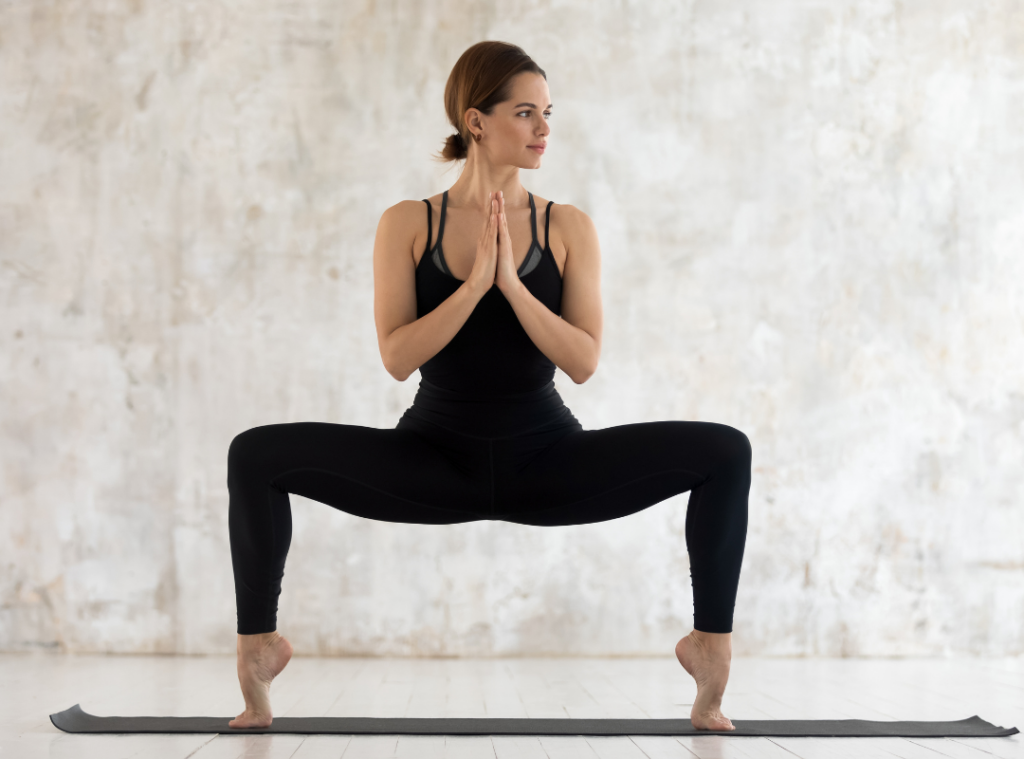
Happy Baby Pose (Ananda Balasana)
Lie on your back and bring your knees towards your chest. Hold onto the outsides of your feet and draw your knees towards your armpits. Rock side to side and breathe deeply.
Bridge Pose (Setu Bandhasana)
Lie on your back with your knees bent and your feet hip-distance apart. Press your feet into the floor and lift your hips towards the ceiling. Clasp your hands together under your back and breathe deeply.
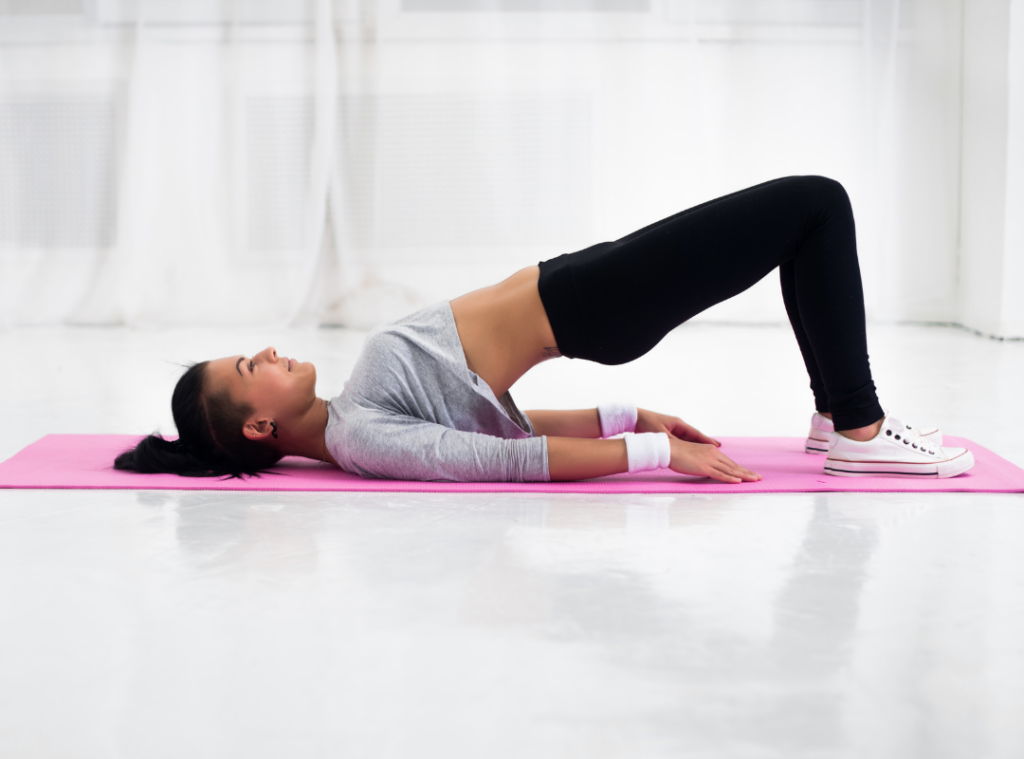
Mula Bandha
Sit in a comfortable position, close your eyes, and imagine that you are drawing the pelvic floor muscles up and in towards your spine. Hold for several breaths, then release.
Remember to always listen to your body and honor any limitations or injuries you may have. It’s also a good idea to warm up with some gentle stretches before moving into deeper poses, and to cool down with some gentle stretches before ending your practice. If you have any concerns or questions, it’s always a good idea to consult with a qualified yoga teacher.
The Importance of Shavasana After Trauma Releasing Yoga Practice
Shavasana, or Corpse Pose, is an important part of any yoga practice, but especially so after a trauma-releasing practice. After working with the body to release tension and trauma, it is essential to allow the body to integrate these changes and come to a state of rest. Shavasana provides an opportunity to allow the nervous system to calm down and the body to fully relax, which can help to reduce stress and anxiety, improve sleep, and promote overall well-being. By taking the time to practice Shavasana after a trauma-releasing yoga practice, you allow your body and mind to fully process and integrate the benefits of the practice, leaving you feeling rejuvenated and more at ease.
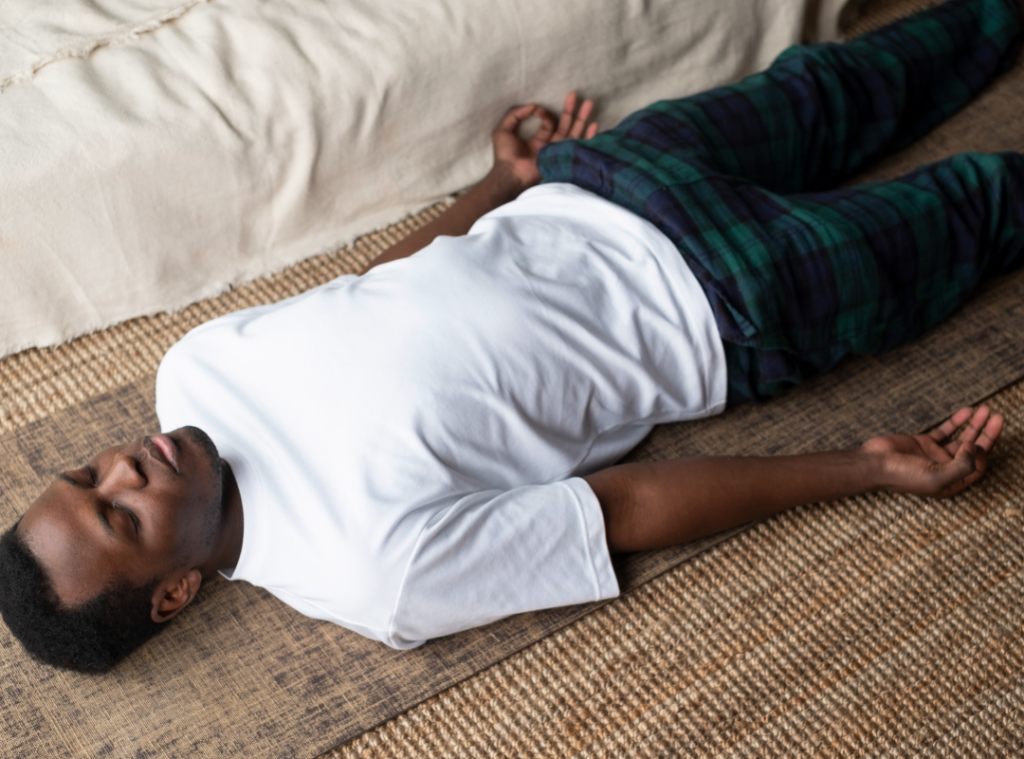
After completing your yoga practice, it’s important to take some time for yourself to relax and integrate the benefits of the practice. This is where Shavasana, or Corpse Pose, comes in. Shavasana is a pose of total relaxation, where you lay flat on your back and allow your body to rest.
During Shavasana, you can also take the opportunity to clear any blockages in your chakras. Chakras are energy centers in the body that are associated with different aspects of our physical, emotional, and spiritual well-being. When our chakras are balanced and open, we feel healthy, energized, and emotionally stable. However, when our chakras are blocked, we may experience physical and emotional imbalances.
Chakra Cleansing Meditation for Shavasana after Your Trauma Releasing Practice
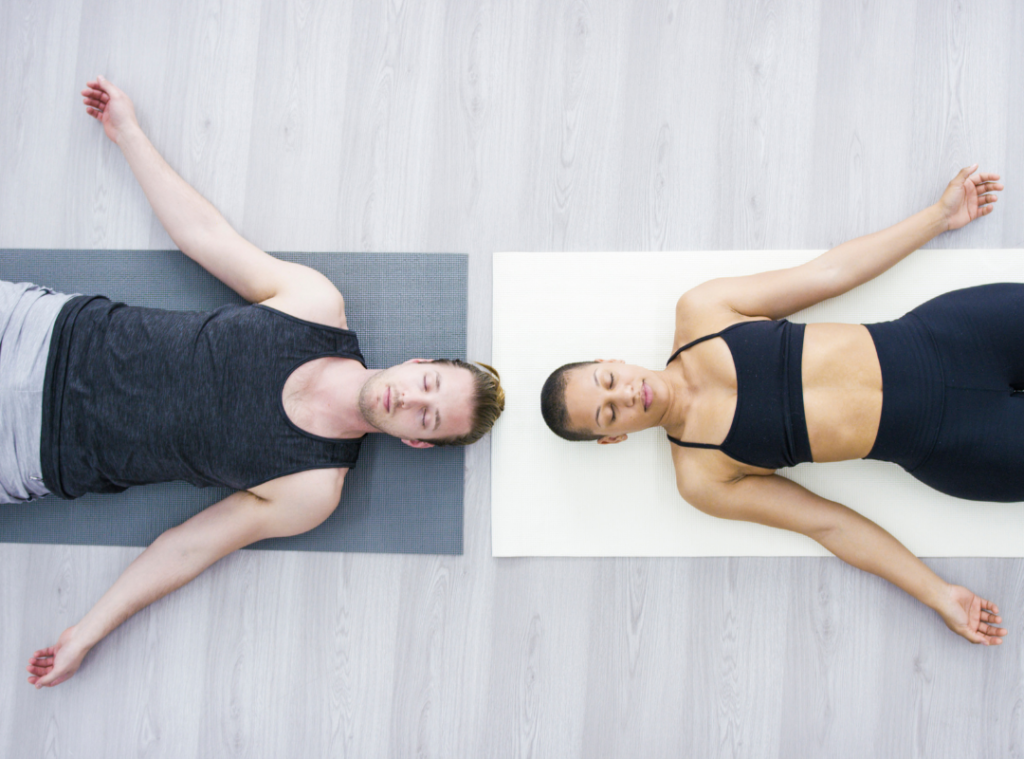
To clear your chakras during Shavasana, you can practice a chakra-clearing meditation. Here is a simple meditation that you can use:
1. Start by laying down flat on your back, with your legs straight and your arms by your sides. Close your eyes and take a few deep breaths, relaxing your body with each exhale.
2. Imagine a bright red light at the base of your spine, at the location of your Root Chakra. As you inhale, visualize this light growing brighter and stronger. As you exhale, imagine any tension or blockages in this area being released.
3. Move your attention up to your Sacral Chakra, which is located in your lower abdomen. Visualize a vibrant orange light at this location, and repeat the same process of inhaling to brighten the light and exhaling to release any tension or blockages.
4. Next, bring your attention to your Solar Plexus Chakra, which is located at your diaphragm. Visualize a bright yellow light at this location and repeat the same process of inhaling to brighten the light and exhaling to release any tension or blockages.
5. Move your attention up to your Heart Chakra, which is located at the center of your chest. Visualize a vibrant green light at this location, and repeat the same process of inhaling to brighten the light and exhaling to release any tension or blockages.
I always recommend staying for a bit in the Heart Chakra center and taking a few rounds here during this meditation. You want to fully release the trauma and allow yourself to feel everything fully, but you also want to be able to return to a heart-centered place.
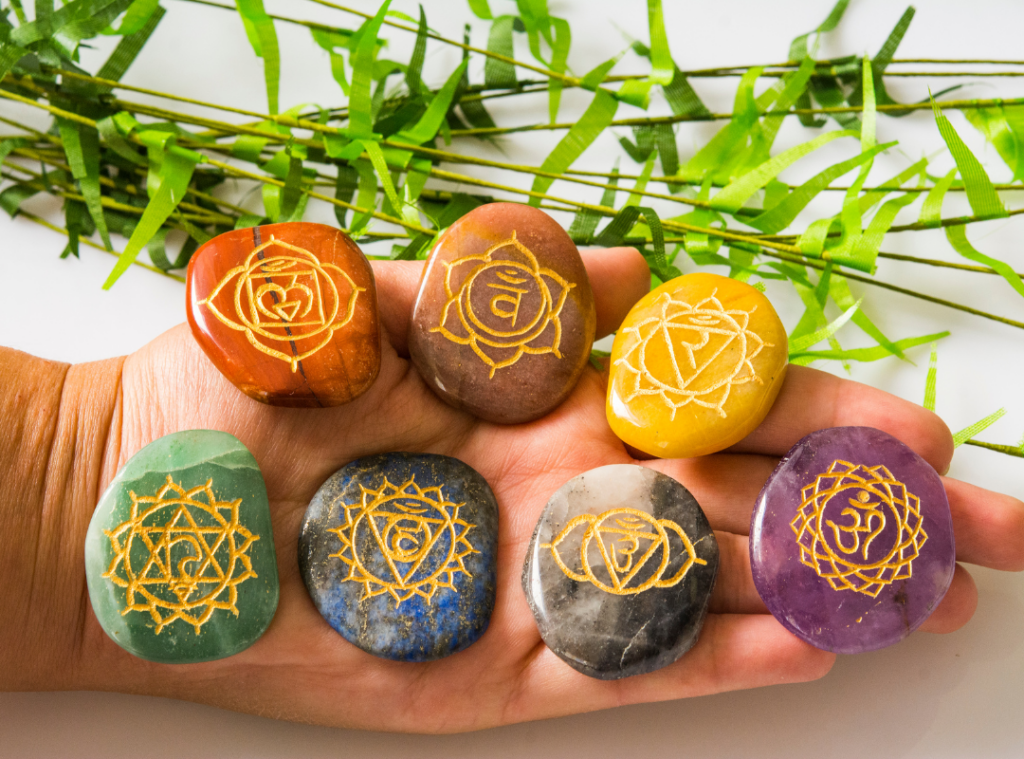
6. Next, bring your attention to your Throat Chakra, which is located at your throat. Visualize a bright blue light at this location, and repeat the same process of inhaling to brighten the light and exhaling to release any tension or blockages.
7. Move your attention up to your Third Eye Chakra, which is located in the center of your forehead. Visualize a bright indigo light at this location, and repeat the same process of inhaling to brighten the light and exhaling to release any tension or blockages.
8. Finally, bring your attention to your Crown Chakra, which is located at the top of your head. Visualize a bright white or violet light at this location, and repeat the same process of inhaling to brighten the light and exhaling to release any tension or blockages.
9. After completing the meditation for all chakras, allow yourself to rest in stillness for a few moments before slowly moving out of Shavasana and back into your day.
This chakra-clearing meditation is a great way to release any blockages and tension that you may be holding in your body. By clearing your chakras, you may experience improved physical, emotional, and spiritual well-being.
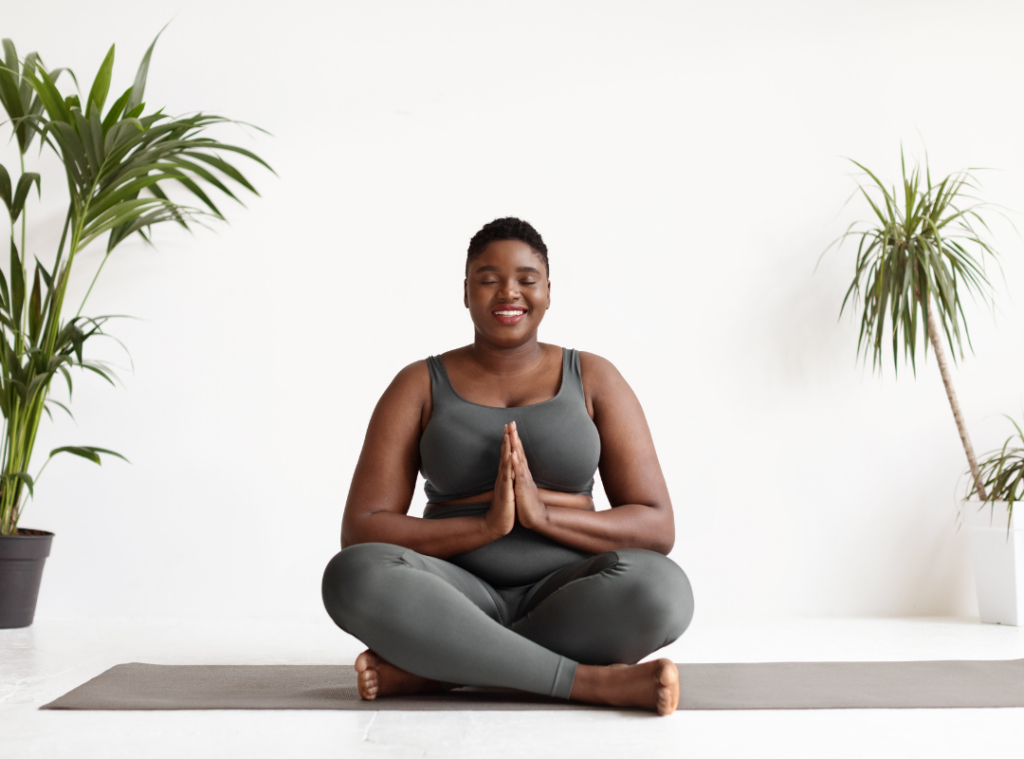
In conclusion, trauma is always stored in the body, particularly in the pelvis and hips.
This causes not only physical but emotional pain— leading to a decrease in overall health and well-being. However, practicing yoga is an effective way to release and heal from trauma. By practicing the poses and techniques mentioned in this article, you can learn to release tension in the pelvis and hips, allowing for greater physical and emotional healing.
Remember, disease comes from dis-ease, and it’s important to address any physical and emotional traumas in order to achieve optimal health. So take the time to care for your body, and remember that yoga can be a powerful tool in your healing journey.
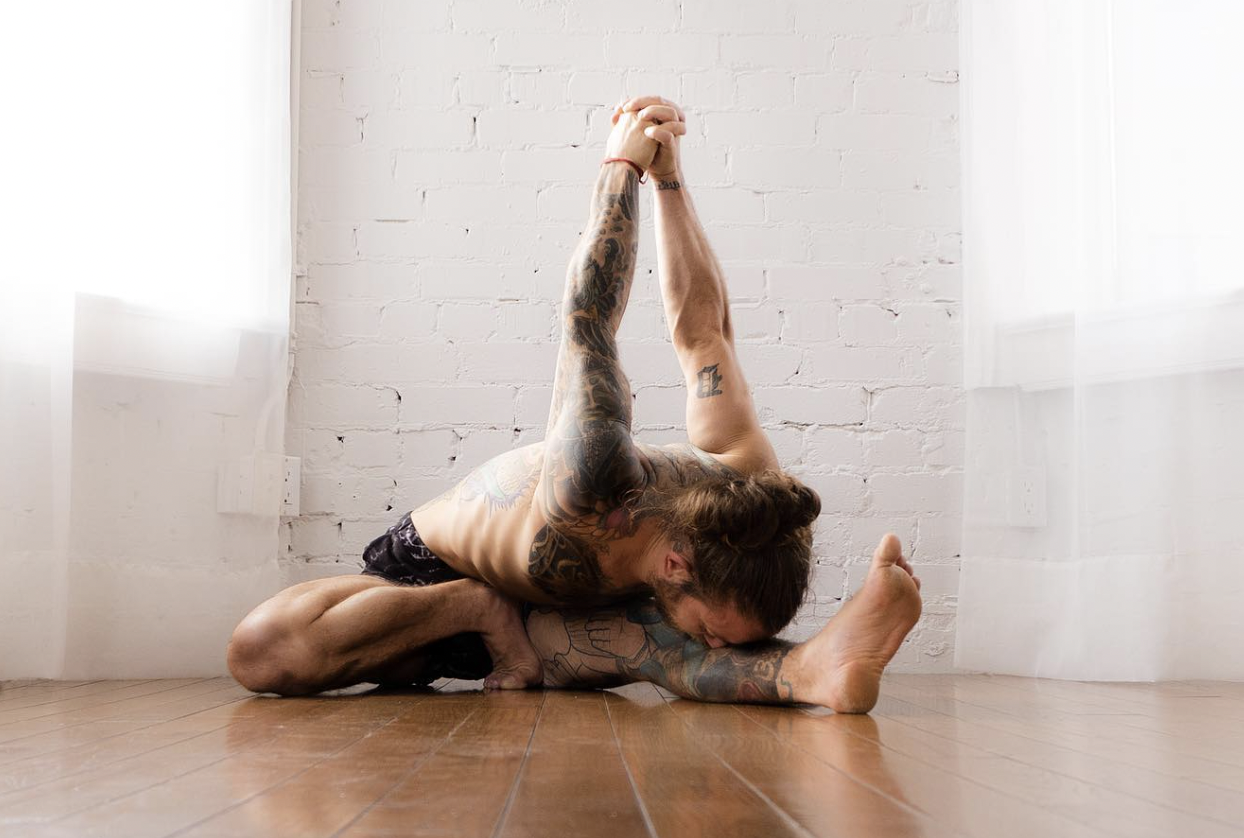
[…] through Inner Child Trauma Release? Try these yoga poses and chakra-clearing meditation for […]